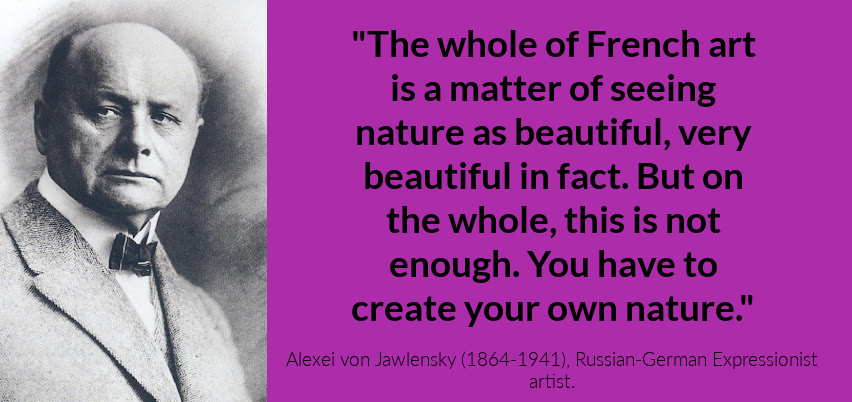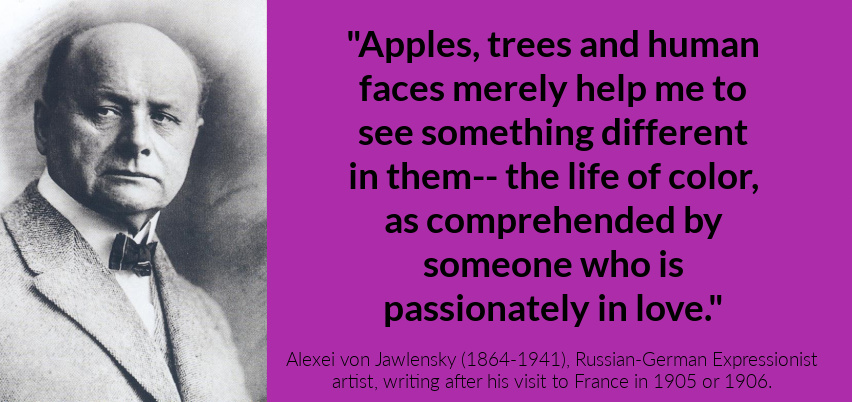
FEATURE image: Photograph of Alexei von Jawlensky (1864-1941), Russian-émigré German Expressionist painter.
Alexei von Jawlensky (1864-1941) was a late 19th-early 20th century Russian-émigré artist to Germany. In an art career which began in earnest in the mid1890’s Jawlensky became, over the next decade and a half, one of the most progressive avant-garde modernist artists of his generation.
Based in Munich, Germany, Jawlensky surrounded himself with a coterie of fellow young ex-patriate artists such as Russian Wassily Kandinsky (1866-1944). Jawlensky’s art developed out of an international search which took the artist from Russia to Germany and onwards to France, England, the Low Countries, and Switzerland.
Jawlensky borrowed significantly from the avant-garde art movements of his day, namely, French Impressionism, Post Impressionism, Cloisonnism, Synthetism, Symbolism, and Fauvism. Jawlensky was a friend and admirer of Henri Matisse (French, 1869-1954).
Before the outbreak of World War One, Jawlensky experimented and synthesized his modern art to the plateau of new-found German Expressionism. In a working dialogue with Wassily Kandinsky, German painter Gabriele Münter (1877-1962), and several other avant-garde artists, Jawlensky pursued his individual experimentation with particular interest as to the liberation of color and form. This was done in the context of European modernism, including its response to modern society’s industrialization and mechanization.
Emergent German Expressionists such as Jawlensky sought to free the object —that is, more precisely, the whole natural world—from its objective fixity so to situate it within the inner feelings and spirit of the artist.
As a European modernist, Jawlensky participated in international modern art exhibitions that featured avant-garde artists whose artwork was controversial in general society as well as in the prevailing art world. Jawlensky co-founded leading avant-garde art groups such as, in 1909, the New Munich Artist’s Association and, in 1911, Der Blaue Reiter. These artists groups led modern art towards representational expressionism and abstraction.
Jawlensky died in Germany on March 15, 1941.


The whole matter of French art is a matter of seeing nature as beautiful, very beautiful in face. But on the whole, this is not enough. You have to create your own nature.

Apples, trees and human faces merely help me to see something different in them– the life of color, as comprehended by someone who is passionately in love.

My paintings were aglow with colors and so my soul was contented with them.
Introduction:




